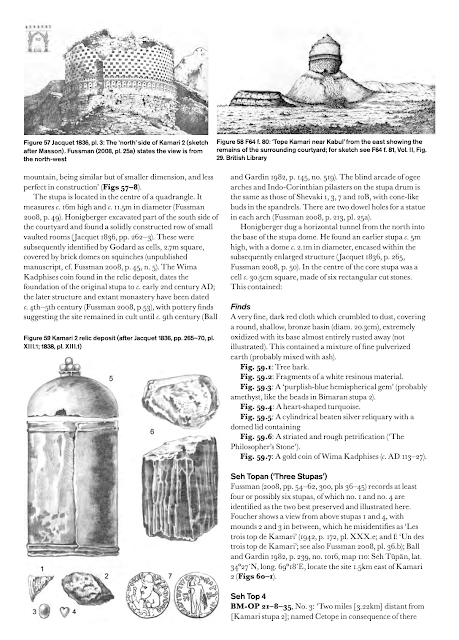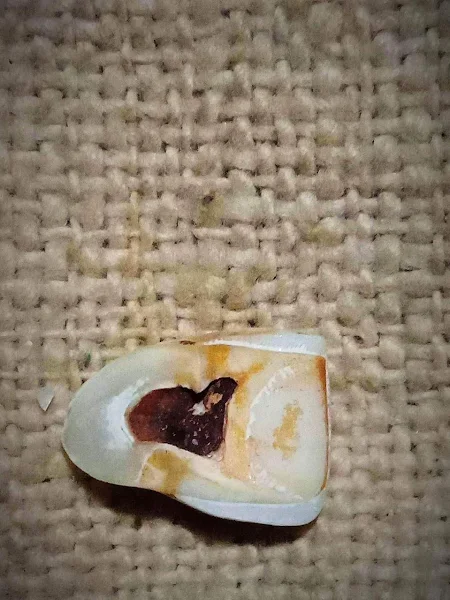This study explores the significance of the hidden Broken Front Tooth Relic of the Buddha, potentially denoted as Fig. 59.8, discovered within the Kamari Stupa near Kabul. The relic, concealed within a small chamber at the core of the stupa and surrounded by symbolic offerings, reflects the profound reverence and protective measures associated with relic enshrinement in Buddhist traditions.

Drawing on historical, cultural, and spiritual contexts, the paper examines the reasons behind the concealment, including protection from desecration, symbolic reverence, and the embodiment of key Buddhist doctrines such as anicca (impermanence). The relic’s association with the Kushan Empire, evidenced by a Wima Kadphises gold coin, further highlights the role of relic worship in legitimizing political authority and promoting Buddhist patronage. This analysis reveals that the hidden tooth relic serves as both a spiritual beacon and a historical testament to the enduring legacy of the Buddha’s teachings, preserved through layers of ritual, devotion, and artistic craftsmanship.
Discovery and Context
The relic featured in the British Museum’s collection is an extraordinary discovery originating from an ancient stupa at Kamari near Kabul. Excavations carried out in the early 19th century by scholars such as Jacquet and Honigberger uncovered a variety of sacred and historical deposits sealed within the relic chamber at the base of the stupa dome. This chamber was carefully crafted with six rectangular cut stones, forming a square space approximately 30.5 cm in size.
Among the most significant findings was a
cylindrical beaten silver reliquary with a domed lid (Figure 5). Inside this intricately designed container lay a
small fragment of a broken front tooth believed to belong to a revered individual—most likely associated with the Buddha’s relics or an eminent Buddhist figure.
The Hswagata Buddha Tooth Relics Preservation Museum ’s preservation of the broken front tooth relic and accompanying artifacts allows modern scholars and practitioners to engage with this invaluable piece of Buddhist heritage. For followers of the Buddha’s teachings, the relic serves as a tangible symbol of impermanence (anicca) and spiritual continuity, echoing the profound journey of the Dhamma across centuries.
Whether displayed for scholarly inquiry or devotional reverence, the broken tooth relic remains a poignant reminder of the enduring legacy of Buddhism and its message of enlightenment.
Historic Display of Authentic Buddha Tooth Relics at MCU's 136th Anniversary
Wang Noi District, Ayutthaya Province - September 13, 2023
In a momentous celebration of the 136th Anniversary of Mahachulalongkornrajavidalaya University (MCU), history was made as the institution welcomed visitors from around the world to witness the unprecedented display of Buddha's authentic tooth relics. The event, held at the MCU Mahavajiralongkorn Conference Hall in the Wang Noi District of Ayutthaya Province, showcased these sacred relics, signifying a profound intersection of science and spirituality.
A Journey of Cooperation and Reverence
The journey leading up to this historic event was marked by international cooperation and goodwill. The former Rector of MCU visited Myanmar and initiated discussions with the Secretary of the Hswagata, resulting in the Buddha tooth relics.
In February 2023, The Hswagata Museum sent the information confirming the DNA and Carbon-14 to MCU, further solidifying the authenticity of the relics. In August of the same year, the founder of The Hswagata, who is pursuing a Ph.D. program in peace studies at the International Buddhist Studies College of MCU, extended an official letter to the Rector's Office, outlining plans for an International Worship Program.
Following a productive meeting between the Vice-Rector of the Foreign Affairs Department and the founder of The Hswagata, the decision was made to include The Hswagata Buddha Tooth Relics Preservation Museum in the exhibition.
Author -
Bhikkhu Indasoma (Researcher)





